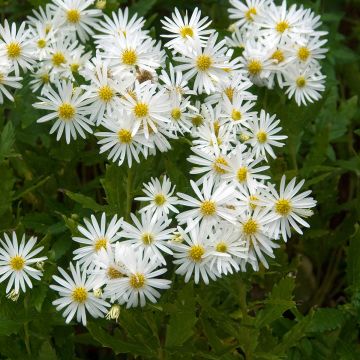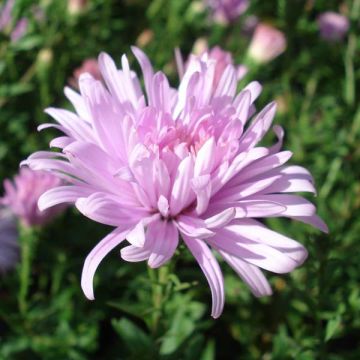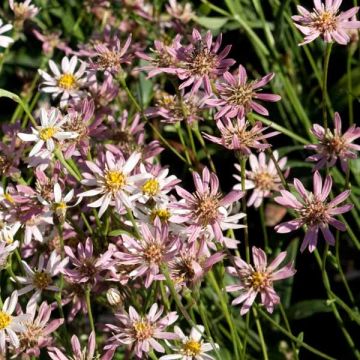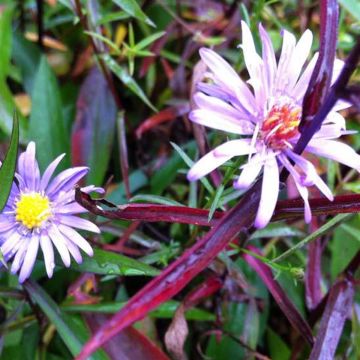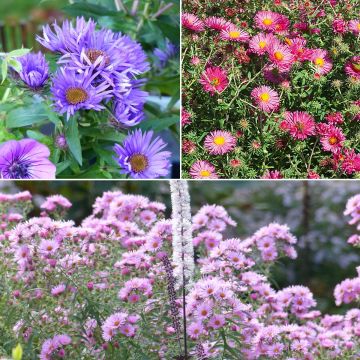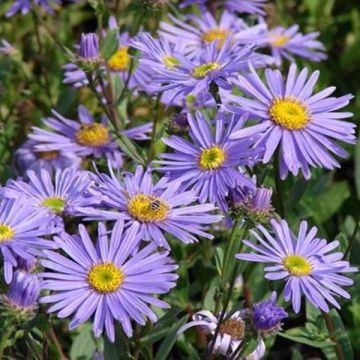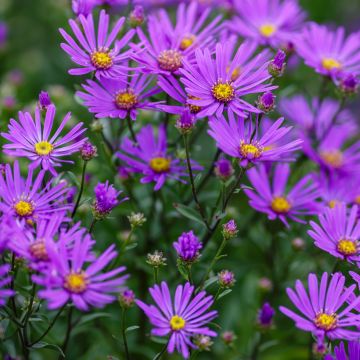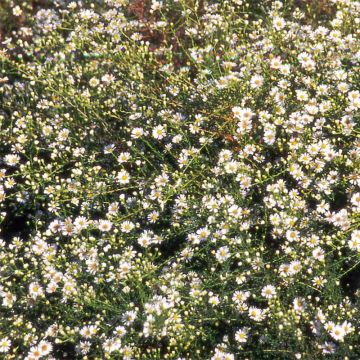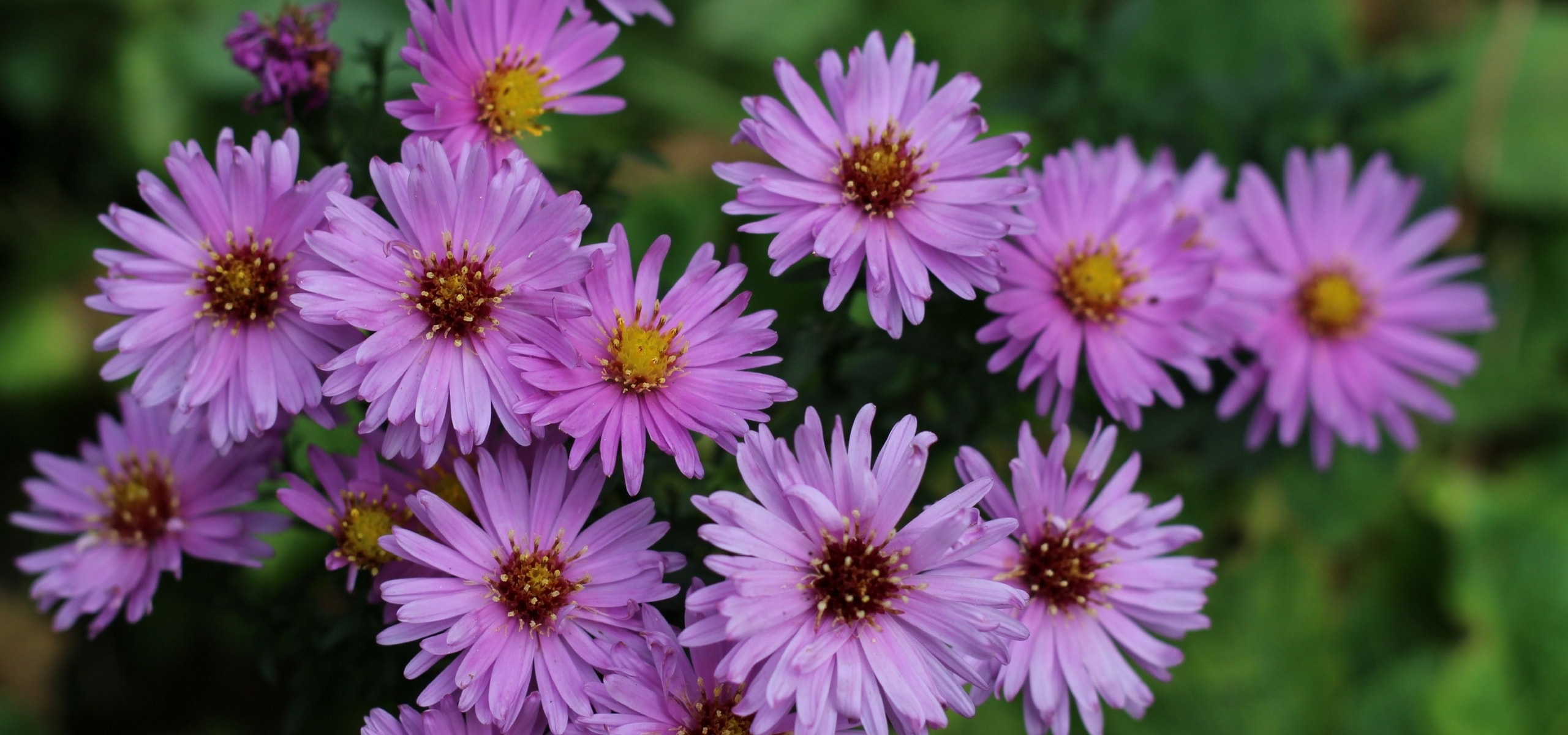
Choosing, planting and caring for asters
Our tips for successfully growing them
Contents
Asters are lovely perennials that brighten up the garden in autumn with their colourful and vibrant flowering! Their flowers resemble those of daisies, with a yellow centre surrounded by blue, pink, mauve, purple, or white petals. Relatively easy to grow, they thrive in sunny, well-drained soil. With nearly 250 species and countless horticultural varieties, asters offer an exceptional range of colours and shapes! The taller ones will add volume and lightness to your flower beds, while the more compact varieties will brighten up your borders and window boxes. They easily combine with other autumn-flowering plants such as colchicums, nerines, chrysanthemums, or pennisetums.
→To learn all about these perennials, read Aster: planting, growing, and caring for.
Choosing the right aster variety?
Most Asters are robust and capable of thriving in the same spot for several years, requiring little maintenance. However, Asters novi-belgii tend to be a bit more delicate than others. They include many varieties with quite spectacular double flowers but are susceptible to powdery mildew.
The diversity of species means there are options for all types of soils. Some Asters prefer warm, well-drained locations, while others thrive in light shade. The Aster divaricatus is suitable for planting in woodland areas. It’s the perfect variety for wild and shaded gardens! For a rockery, opt for Aster alpinus or Aster tongolensis.
Asters can take on different forms: some grow tall, others have a bushy habit, while others spread widely across the ground. If you want to plant them at the back of a border to add volume and height, choose Aster tataricus ‘Jindai’ or Aster lateriflorus ‘Lady in Black’, two varieties that can reach 1.20 m! If it’s for the edge or front of a border, opt for more compact varieties, such as Aster tongolensis ‘Wartburgstern’ or Aster dumosus ‘Jenny’. You can also choose the Aster ‘Snow Flurry’, which has the unique feature of spreading to form a remarkable mat covered in countless small white flowers.
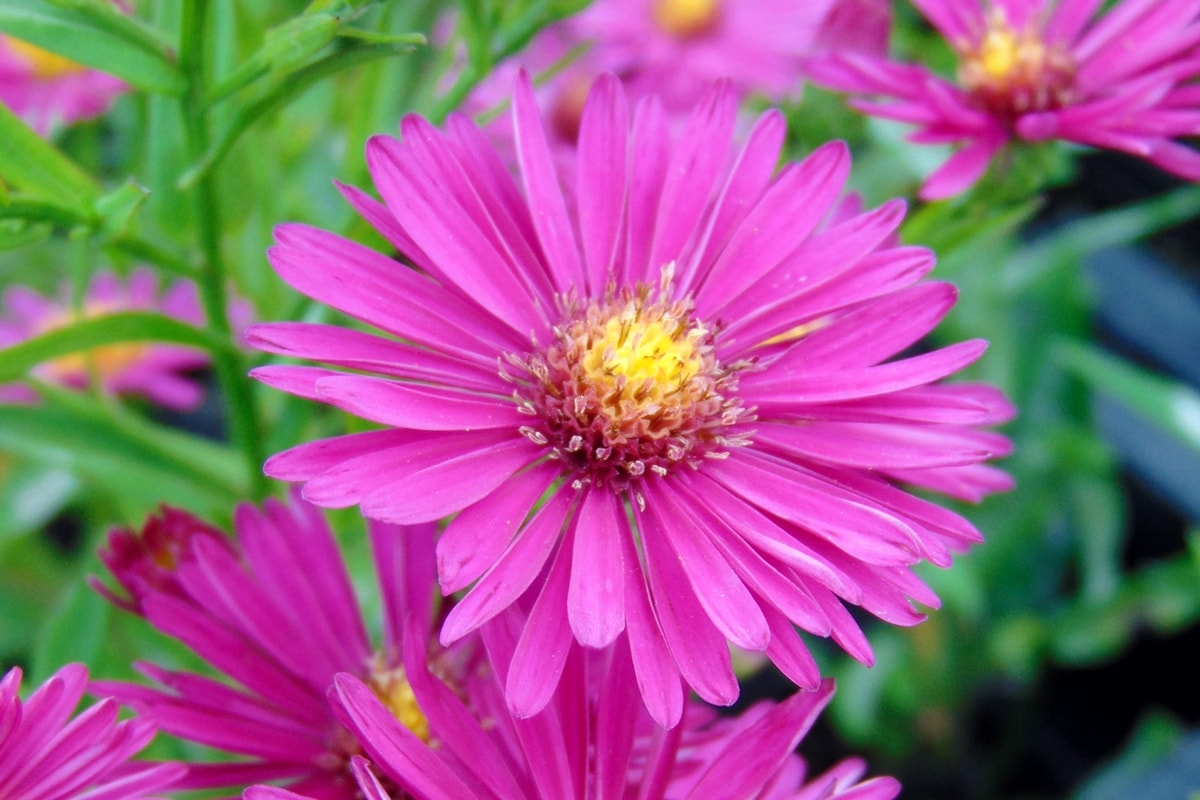 The Aster dumosus ‘Jenny’ is a compact variety with bright pink flowers!
The Aster dumosus ‘Jenny’ is a compact variety with bright pink flowers!
Although most asters bloom in autumn, there are a few exceptions! Want to enjoy spring flowering? Look towards Aster tongolensis or alpinus. These are small asters that adapt well to rockery cultivation. If you prefer summer flowering, then opt for Aster sibiricus, a compact variety with mauve flowers.
Some varieties offer vibrant, eye-catching blooms. For instance, Aster dumosus ‘Andenken an Alma Pötschke’ is notable for its bright pink flowers. Others have much more delicate blooms, which help to lighten borders. This is the case with Aster ‘Monte Cassino’!
For something more original, discover the surprising Aster ‘Ann Leys’ with its purple and green flowers!
 Aster ericoïdes ‘Snow Flurry’, Aster dumosus ‘Augenweide’ and Aster ‘Ann Leys'[/caption>
Aster ericoïdes ‘Snow Flurry’, Aster dumosus ‘Augenweide’ and Aster ‘Ann Leys'[/caption>
When to plant asters?
Plant your asters preferably in autumn, although it is also possible to do so in spring.
However, if your plants are from spring propagation by cuttings and are only weakly rooted, they will struggle to survive the winter. It is best to keep them in pots under cover to replant in the following spring. The plants we offer have been grown outdoors for 9 to 15 months: they can be safely planted directly in the garden.
Discover other Asters
View all →Available in 1 sizes
Available in 0 sizes
Available in 2 sizes
Available in 2 sizes
Available in 1 sizes
Available in 0 sizes
Available in 1 sizes
Available in 1 sizes
Available in 1 sizes
Available in 1 sizes
Where to plant asters?
Most asters enjoy full sun or semi-shaded situations, as well as well-drained soils. The Aster divaricatus is the species best suited to shade, as it can grow in woodland. Avoid planting them in heavy, clayey soil, or consider lightening it with gravel or compost. They thrive in cool, well-drained conditions.
You can also grow them in pots or containers. In this case, preferably choose the Aster dumosus, small and compact.
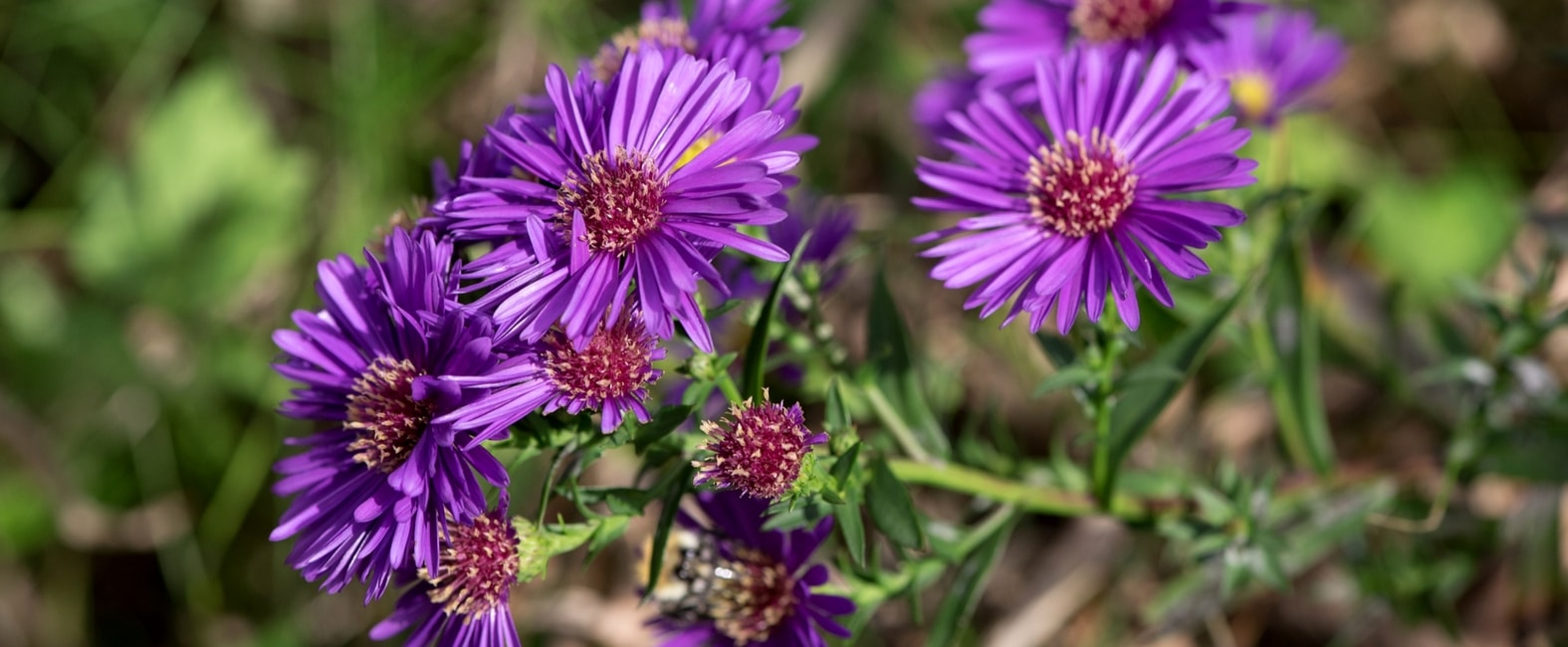
Succeed in their planting
A good planting will allow you to enjoy your asters for years to come. To do this:
- Rehydrate the root ball by placing it in a basin filled with water.
- Dig a hole with a shovel or a spade, 30 cm deep, and incorporate compost or river sand to lighten your soil if it is clayey.
- Carefully untangle the roots, even cutting those that remain tangled at the bottom of the pot.
- Plant ensuring that the base of the leaves is not buried. If your asters are in flower, cut the flower stems with pruning shears or shears so that the plants maintain their vigour.
- Water generously.
- Install a layer of mulch to keep the soil cool.
How to care for asters?
The tallest asters require staking to maintain an upright habit. We also recommend installing a mulch at their base as they prefer cool soil.
Discover our video dedicated to staking Asters, where Stéphane shares his little tips:
We also suggest pinching your asters around June by cutting the stems by a third or even half. This helps achieve more compact plants and results in an even more generous flowering.
The most common disease in asters is powdery mildew, especially if you are growing Aster novi-belgii, which is quite sensitive. As a preventive measure but also as a cure (if you act at the first signs), you can treat by spraying a solution based on wettable sulphur, intervening at 7 to 10-day intervals.
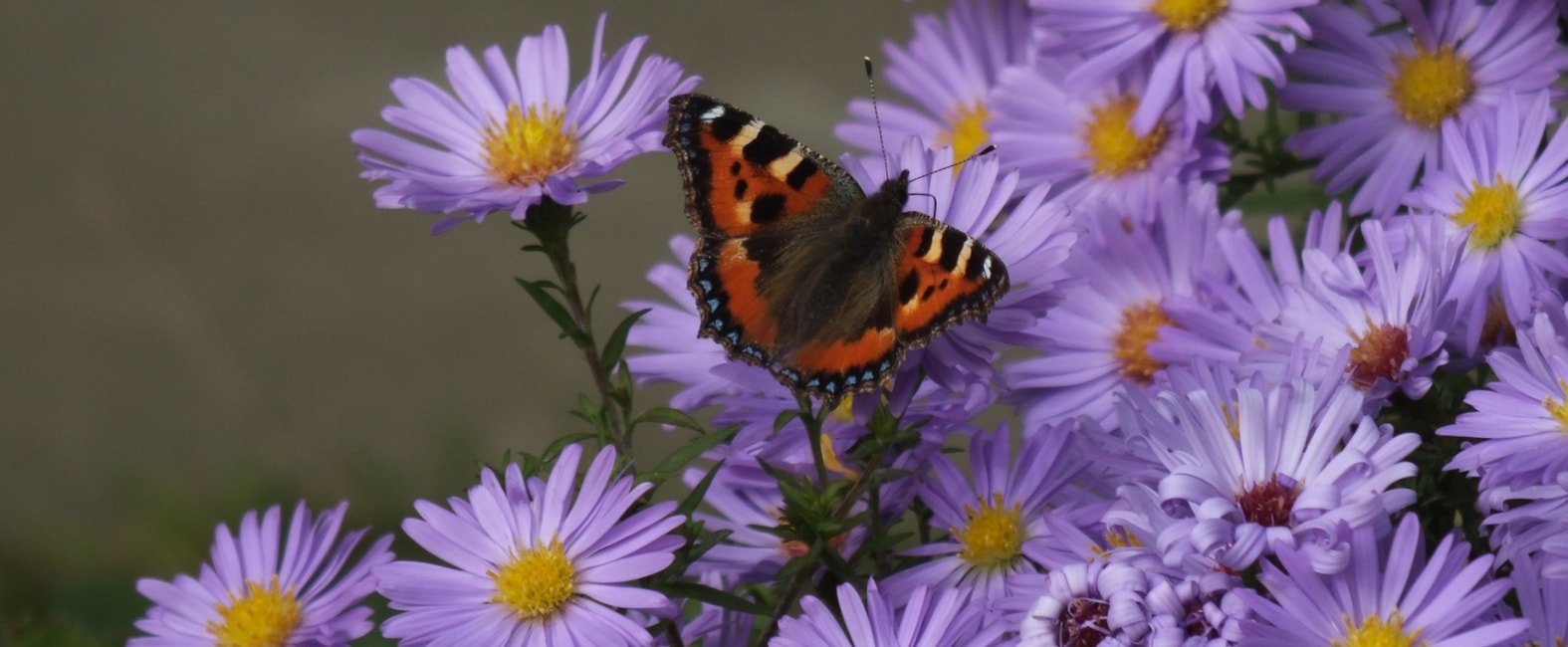
Divide asters
It is advisable to divide asters at least every four years. Preferably do this in late winter or early spring, when the new leaves start to shoot. Dig them up and divide them into several clumps, ensuring there are enough roots each time. Then simply replant them with a bit of potting soil. Remember to water them well to aid their recovery!
- Subscribe!
- Contents
































